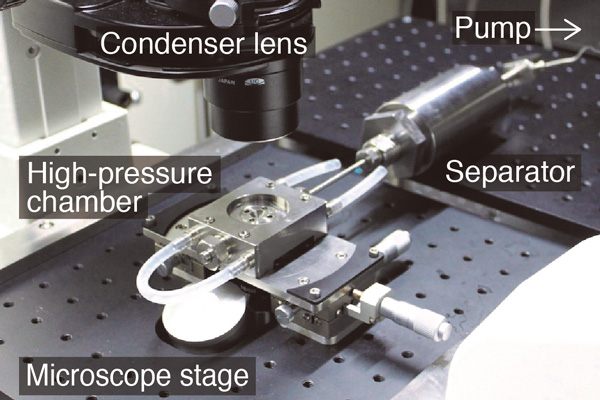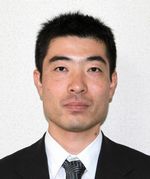Manipulation of Integrated Molecular Reaction Processes in living cell
Project Gist
Mechanical Control of Molecular Machines working in living cells.
Keywords
High-pressure microscope, Molecular machine, Hydration, Nanobiology
Background, Purpose, and Project Achievements
Water is the most abundant substance in cells and its weight accounts for 70% of the total cell component. Most intracellular reactions occur in an aqueous environment and the unique properties of aqueous solutions can be attributed to the network of hydrogen bonds among water molecules. The hydrogen bond forms between a molecule of water and the electric-charged residue of the protein. Water molecules energetically optimize protein structure and are involved in the molecular recognition process. Our research goal is to control chemical reactions proceeding in living cells, without using any chemical materials. We developed a high-pressure microscope that enables us to monitor pressure-induced changes in the structure and function of protein molecules. In this project, we invited researchers to Kyoto University, and then studied the mechanism how applied pressures change the chemical reaction proceeding in living cells. Application of pressure causes significant changes in the cell morphologies and activities of organisms living under ambient pressure. We confirmed that hydrostatic pressure significantly changes cell behaviors such as cell movement, cell division and signal transduction.
Future Prospects
We have demonstrated novel motility assays that change the structure and function of molecular machines. The pressure-induced changes could be caused by modifications of intermolecular interactions between protein and water molecules. The results described here suggest that pressure-induced effects on cell morphology and activity are directly caused by enhancement of hydration by water molecules. Most cellular processes are carried out by biomolecules located in an aqueous environment and the present techniques could be extended to investigate how the dynamic properties of these processes are produced in conjunction with water molecules.
Figures

Principal Investigator

・NISHIYAMA Masayoshi
・The HAKUBI Center for Advanced Research
・I am seeking to develop a new analytical method to modify molecular structures and functions by utilizing high-pressure techniques and performing microscopic analyses with extremely high resolutions.
・http://www.hakubi.kyoto-u.ac.jp/jpn/02_mem/h24_nishiyama.shtml
